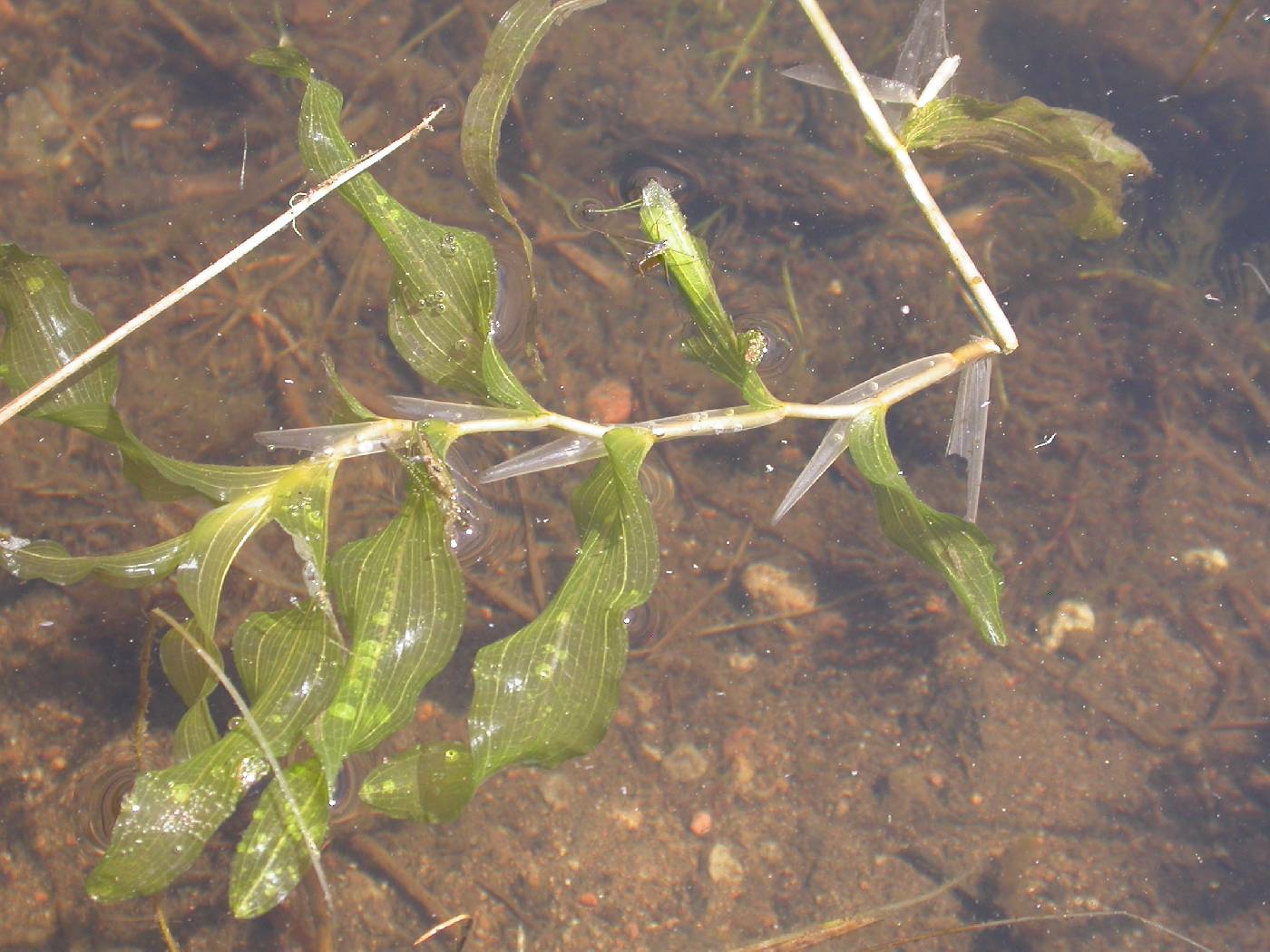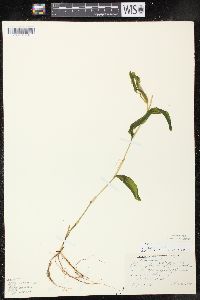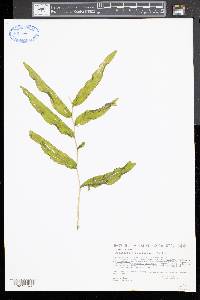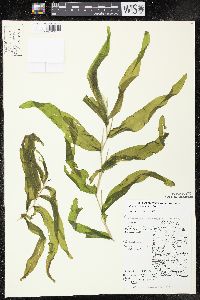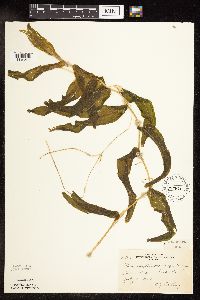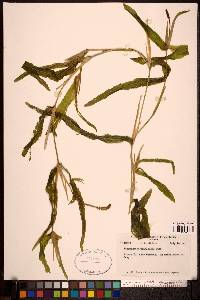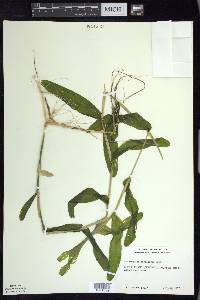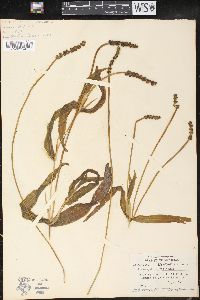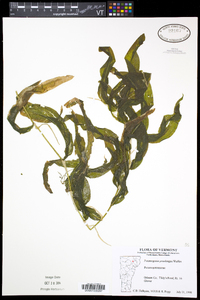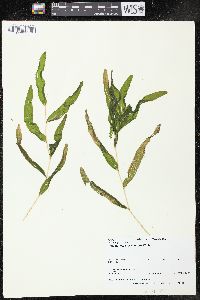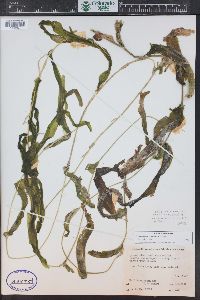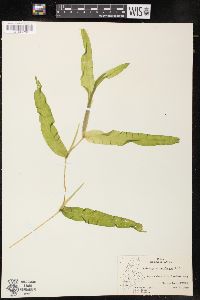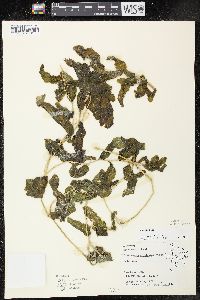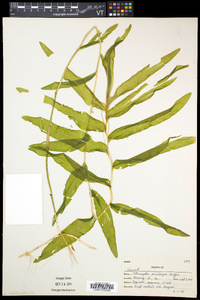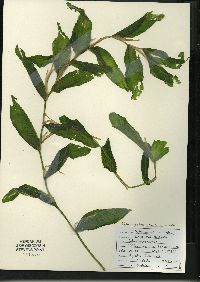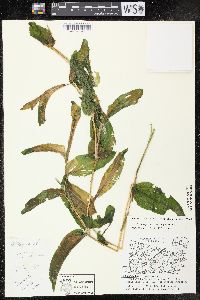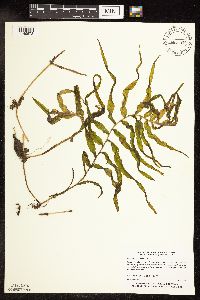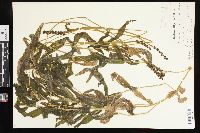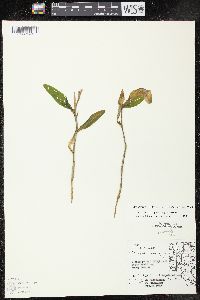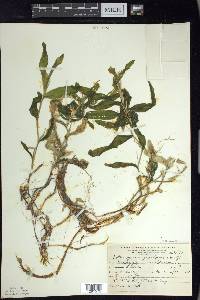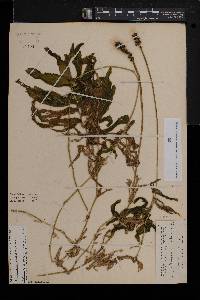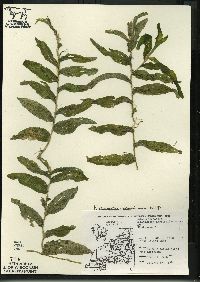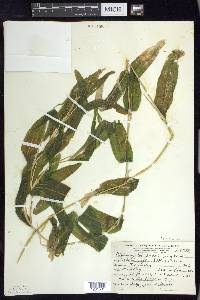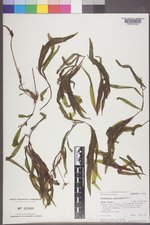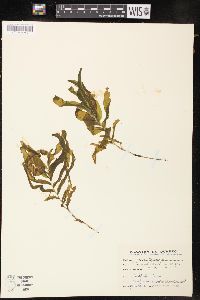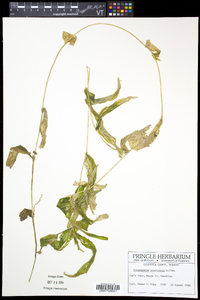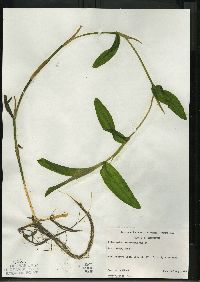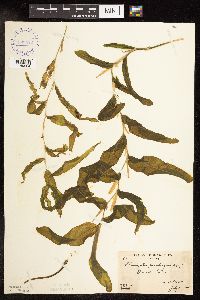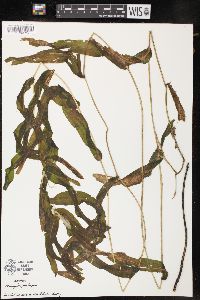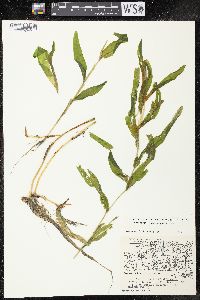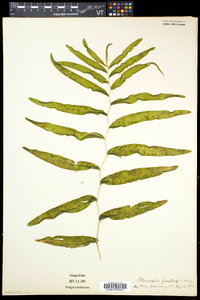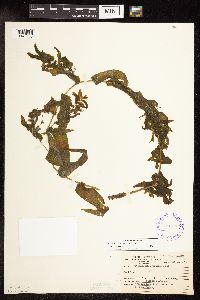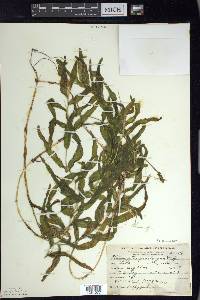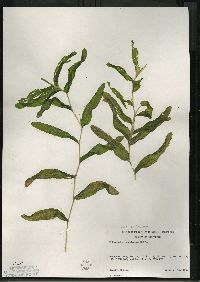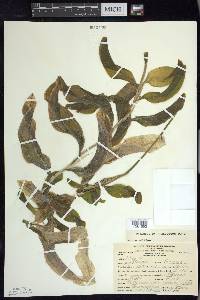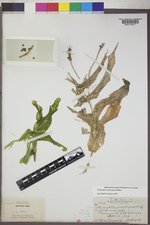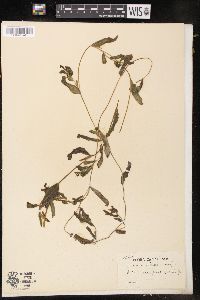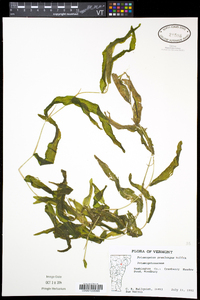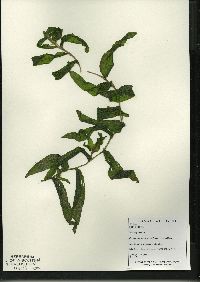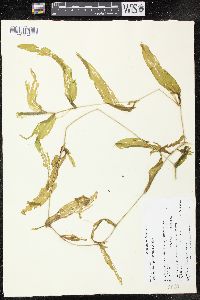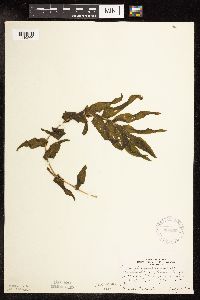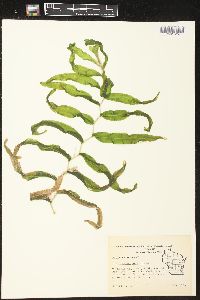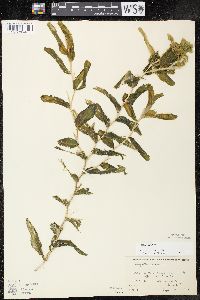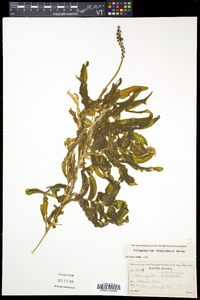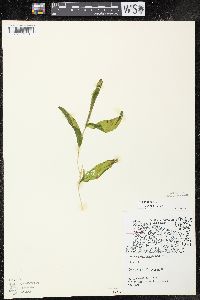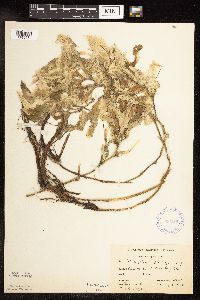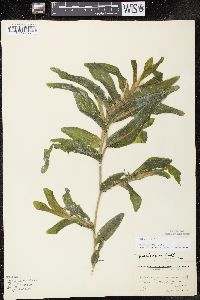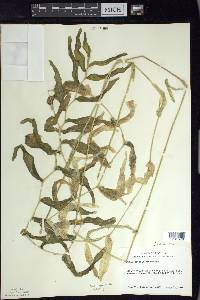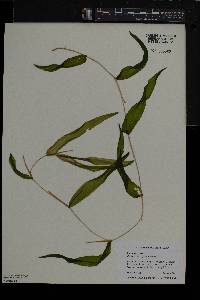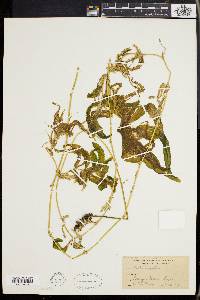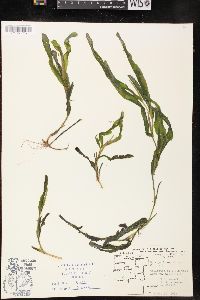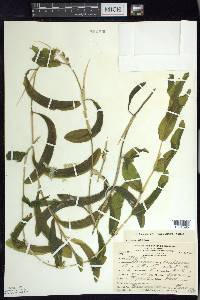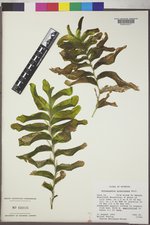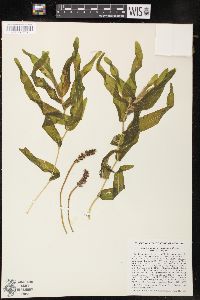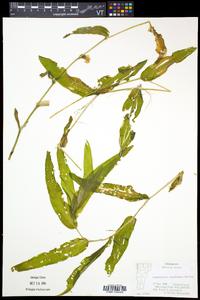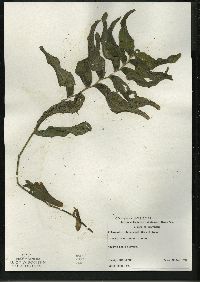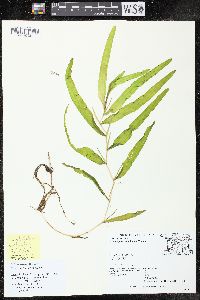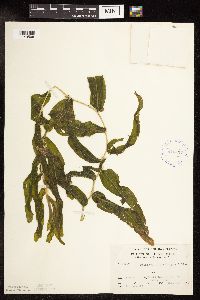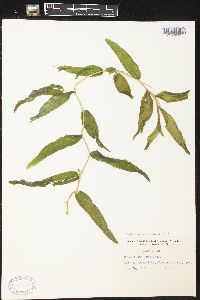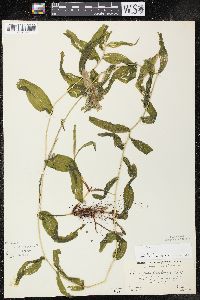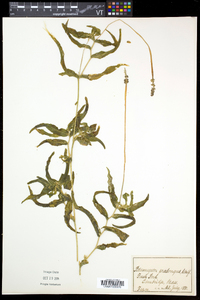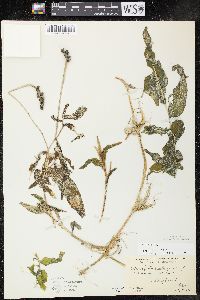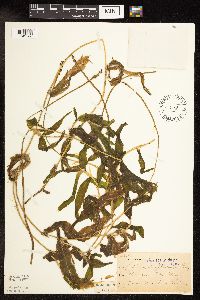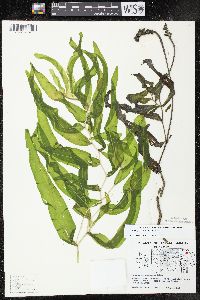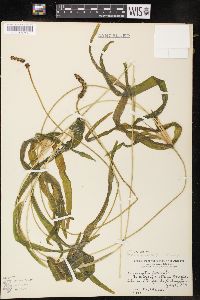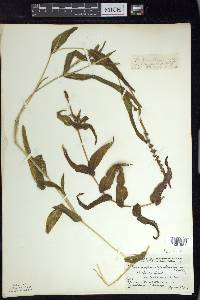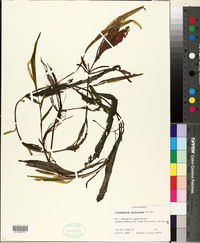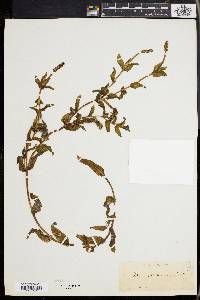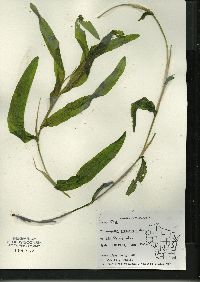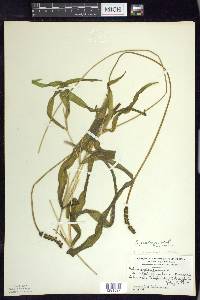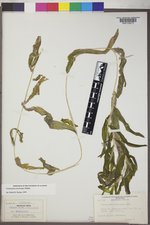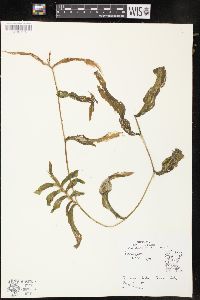Potamogeton praelongus
|
|
|
|
Family: Potamogetonaceae
White-Stem Pondweed
|
Rhizome present. Cauline stems terete, without spots, to 210 cm; nodal glands absent. Turions absent. Leaves submersed, ± spirally arranged, sessile, lax; stipules persistent, conspicuous, convolute, free from blade, white to green, not ligulate, 3--8.1 cm, fibrous, shredding at apex; blade pale green, rarely olive green, linear-lanceolate, not arcuate, 0.8--2.8 cm ´ 11--46 mm, base clasping, without basal lobes, margins entire, rarely crispate, apex hoodlike, splitting when pressed, obtuse, lacunae absent; veins 11--33. Inflorescences emersed, unbranched; peduncles not dimorphic, terminal or axillary, erect to spreading, cylindric, 9.5--53 cm; spikes not dimorphic, cylindric, 34--75 mm. Fruits sessile, greenish brown, obovoid, turgid, abaxially keeled, occasionally laterally keeled, 4--5.7 ´ 3.2--4 mm, lateral keels when present without points; beak erect, 0.6--1 mm; sides without basal tubercles; embryo with 1 full spiral. 2n = 52. Flowering summer--fall. Neutral to alkaline waters of lakes, rivers, and streams; Greenland; 100--3000 m; Greenland; Alta., B.C., Man., N.B., Nfld. and Labr. (Nfld.)}, N.W.T., N.S., Nunavut, Ont., P.E.I., Que., Sask., Yukon; Alaska, Calif., Colo., Conn., Idaho, Ind., Iowa, Maine, Mass., Mich., Minn., Mont., Nebr., N.H., N.J., N.Y., Oreg., Pa., S.Dak., Utah, Vt., Wis., Wyo.; Mexico; Eurasia. Potamogeton praelongus is one of the easiest pondweeds to identify with its submersed leaves only clasping the more or less zigzagged stem. The persistent, hugelarge, white stipules provide another clue to this species. Four hybrids, Potamogeton perfoliatus ´ P. praelongus (= P. ´ cognatus Ascherson & Graebner), P. alpinus ´ P. praelongus (= P. ´ griffithii A. Bennett), P. crispus ´ P. praelongus (= P. ´ undulatus Wolfgang ex Schultes & Schultes f.), and P. gramineus ´ P. praelongus (= P. ´ vilnensis Galinus), have been described.
Perennial submersed aquatic herb with rhizomes to 3 m tall Stem: freely branched, often flexible or zigzag when the internodes are about 3 - 5 cm long. Leaves: submersed, more or less arranged spirally, stalkless, translucent, 8 - 30 cm long, 1 - 4.5 cm wide, narrowly lance-shaped with a rounded, clasping base and blunt tip, 11- to 33-veined. Stipules axillary, free from leaf blade, green to white, rolled up, 3 - 8 cm long, fibrous, shredding at tip. Inflorescence: a cylindrical spike of flowers, emersed, unbranched, 3 - 7.5 cm long, on a terminal or axillary stalk. Stalks upright to spreading, cylindrical, 9.5 cm - 0.5 m long, about as thick as stem. Flowers: greenish, tiny. Stamens four. Anthers two-chambered, with four edge-to-edge sepal-like outgrowths. Fruit: an achene, stalkless, greenish brown, 4 - 5.7 mm long, 3.2 - 4 mm wide, reverse egg-shaped, plump, keeled, with an upright, 0.6 - 1 mm long beak. Keel narrow and sharp, often with two lateral ones. Similar species: Easily identified by the clasping submersed leaves, zigzag stem, and large white stipules. Flowering: mid-June to mid-August Habitat and ecology: Rare in the Chicago Region. Found in clear lakes. Occurence in the Chicago region: native Notes: Plants in the genus Potamogeton are very important to wildlife, offering habitat and food for many aquatic animals. Etymology: Potamogeton comes from the Greek words potamos, meaning river, and geiton, meaning neighbor, referring to the habitat of these plants. Praelongus means "greatly prolonged." Author: The Morton Arboretum Stems to 3 m, freely branched, usually flexuous or zigzag when the internodes are short (3-5 cm); lvs all submersed, sessile, lanceolate to lance-linear, 8-30 נ1-4.5 cm, obtuse or subacute and usually hooded at the tip, rounded and slightly clasping at base, with 11-35 veins, 3 or 5 of them stronger; stipules axillary, white, scarious, 3-8 cm, free but closely appressed to the stem, persistent, shredding at the tip; peduncles about as thick as the stem, usually elongate, to 5 dm; spikes cylindric, 3-7.5 cm, dense or interrupted; frs obovoid, turgid, 4-5.7 mm, short-beaked, with a sharp, narrow dorsal keel and often 2 obscure or rounded lateral ones; 2n=52. Usually in deep water; circumboreal, s. in Amer. to Conn., Md., Ind., Minn., Colo., and Calif. Gleason, Henry A. & Cronquist, Arthur J. 1991. Manual of vascular plants of northeastern United States and adjacent Canada. lxxv + 910 pp. ©The New York Botanical Garden. All rights reserved. Used by permission. From Flora of Indiana (1940) by Charles C. Deam Infrequent in the lakes of the lake area. …… Indiana Coefficient of Conservatism: C = 10 Wetland Indicator Status: OBL |

